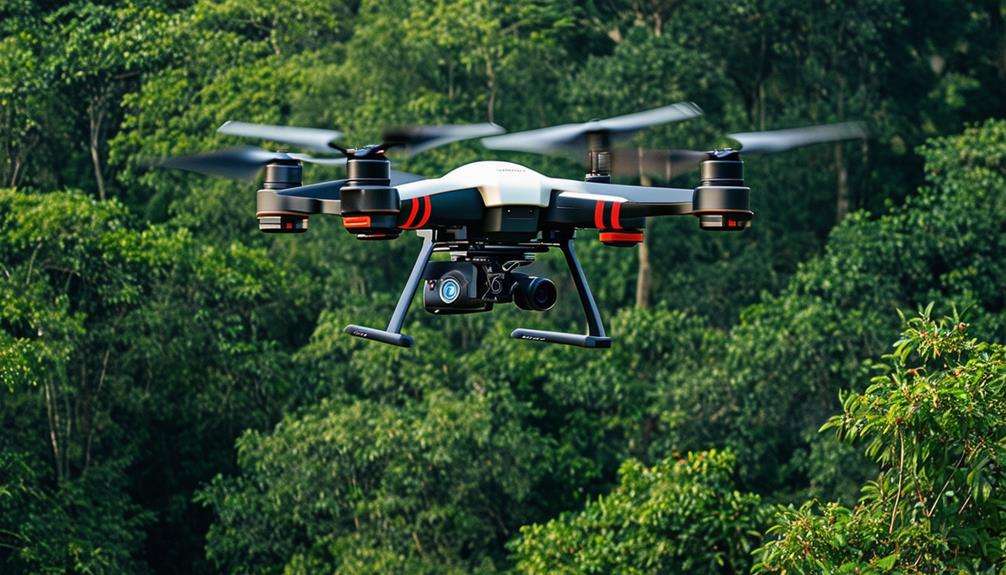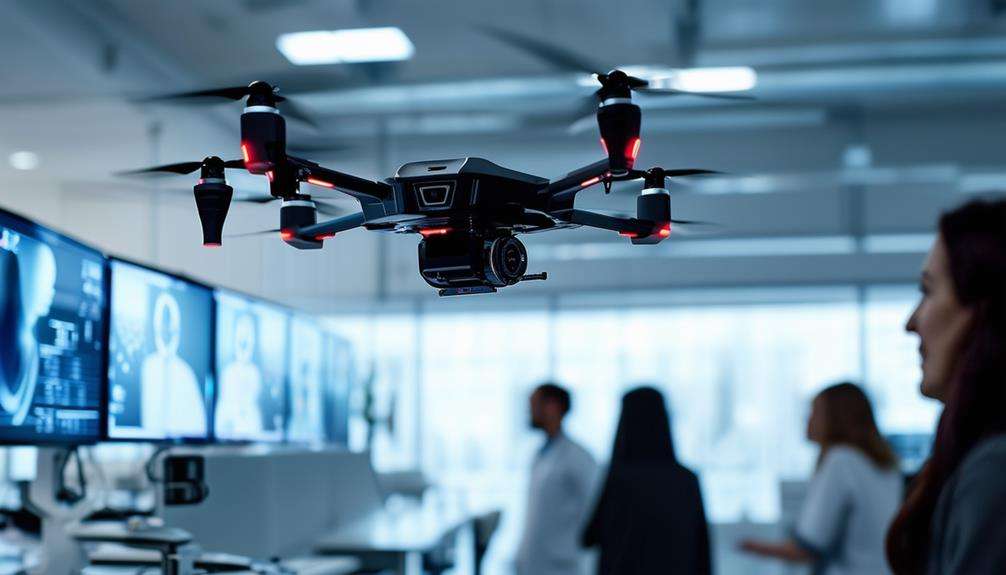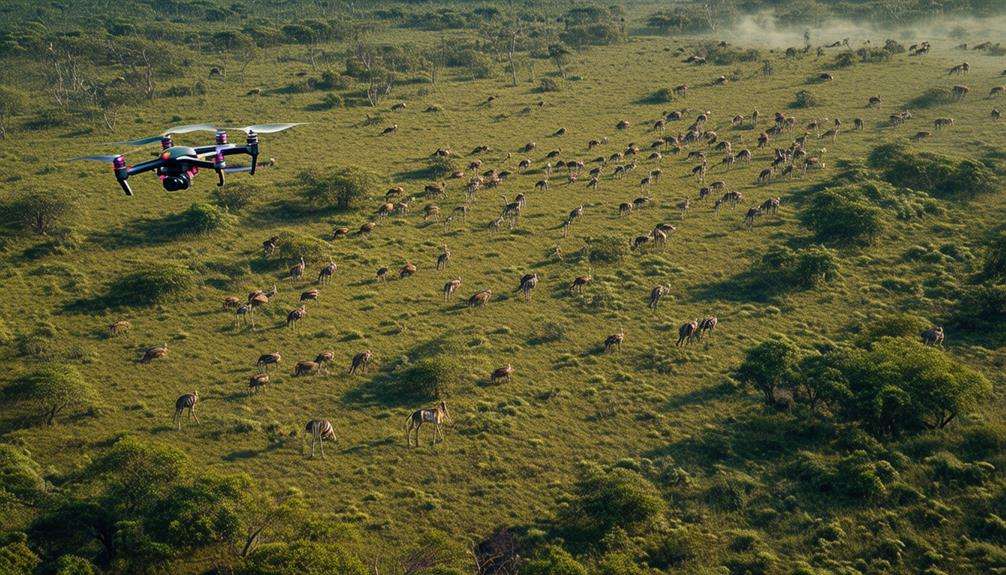The Role of Drones in Space Exploration
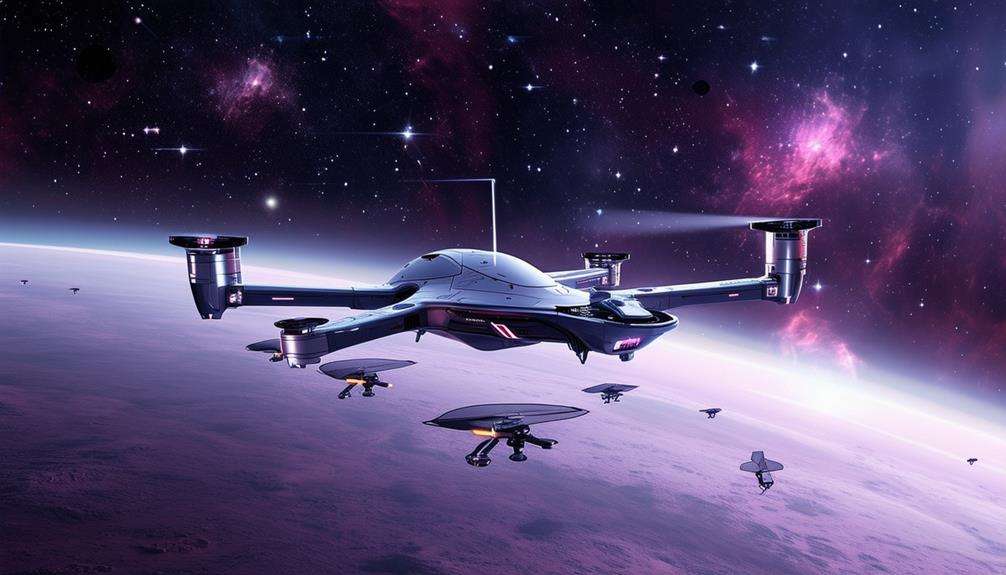
Drones have become indispensable tools in space exploration, offering far-reaching impacts. These machines can traverse the treacherous surfaces of distant planets, conduct aerial atmospheric studies, and autonomously collect samples.
Beyond data gathering, drones significantly enhance mission efficiency and safety. As technology advances, their potential applications could revolutionize our investigation and habitation of other worlds.
What does this mean for the future of space missions and the possibilities ahead?
Advancements in Drone Technology
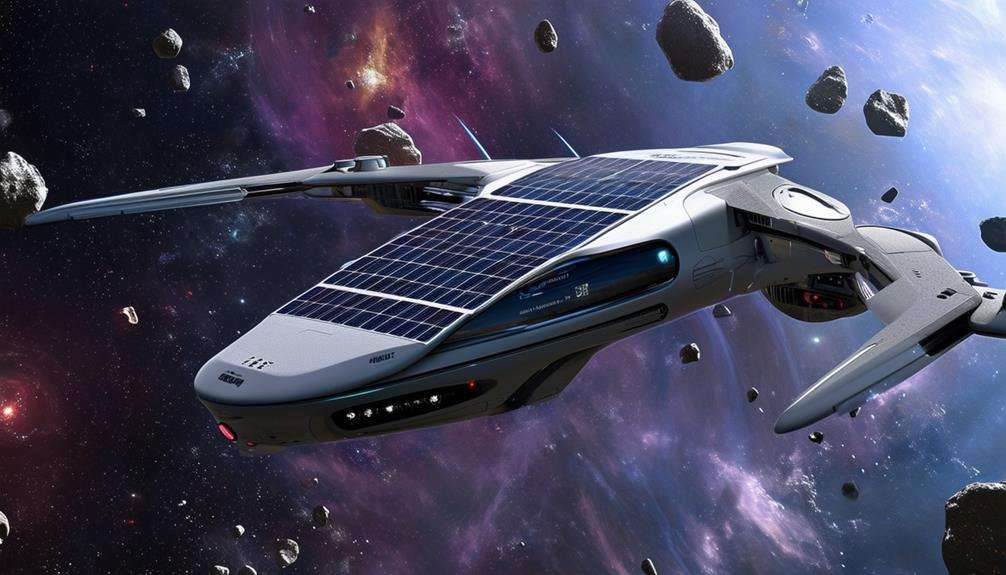
In recent years, drone technology has significantly advanced, particularly in autonomous navigation and precise GPS-based systems for space exploration. Modern drones are now equipped with sophisticated sensors such as cameras, lidar systems, and GPS modules, making them indispensable tools in space habitats. These technological improvements enable drones to efficiently carry out maintenance tasks, explore new planets, and provide critical surveillance.
Autonomous navigation is a transformative development. With the ability to make real-time decisions, drones can perform complex tasks without human intervention. This autonomy is crucial for missions where real-time control from Earth is impractical due to the vast distances involved. The technology behind these drones minimizes the risk of human error and ensures consistent performance in harsh space environments.
Moreover, drones play a vital role in planetary defense. Equipped with advanced sensors, they can monitor and detect potential threats, providing an early warning system. The environmental impact of space operations is another important consideration. Drones help mitigate this by offering reliable, efficient, and safe operations, reducing the risk of contamination or unintended damage to celestial bodies.
In essence, the advancements in drone technology are revolutionizing space exploration, making missions safer, more efficient, and more effective.
Planetary Surface Exploration
Drones have become indispensable tools for exploring the rugged and remote surfaces of planets like Mars. Their ability to navigate challenging terrains makes them essential for planetary exploration. Imagine unmanned aerial vehicles (UAVs) skillfully maneuvering over the Martian surface, reaching places that traditional rovers can't.
These UAVs assist in mapping, collecting samples, and analyzing data, which are pivotal for understanding celestial bodies. For instance, drones can fly over steep cliffs and deep craters on Mars, capturing high-resolution images and gathering soil samples. This detailed data helps scientists on Earth understand the Martian surface and its history.
Exploration missions benefit immensely from drones' capabilities. They can autonomously perform tasks, reducing the need for constant human intervention. Picture a drone soaring over Mars, autonomously collecting samples from multiple locations in a single day—something that would take a rover weeks to accomplish.
In essence, drones offer a new dimension to planetary exploration. They enhance our ability to study extraterrestrial environments, making them invaluable for future missions aimed at understanding our neighboring celestial bodies.
Aerial Atmospheric Studies
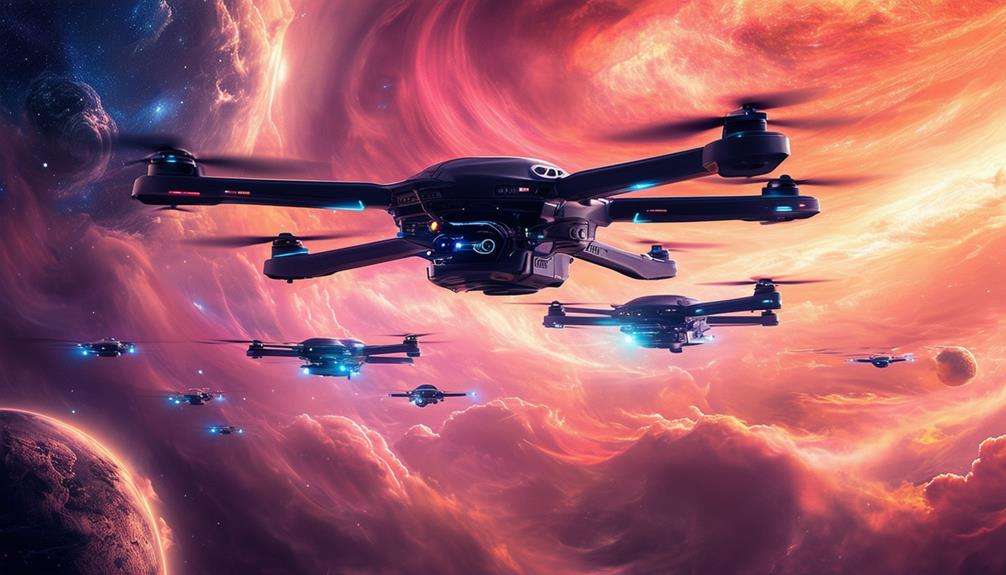
Through aerial atmospheric studies, scientists acquire invaluable insights into the environmental conditions and atmospheric processes of other planets. Drones play a crucial role in these studies by collecting data on temperature, pressure, and chemical composition of planetary atmospheres. This data is essential for understanding climate variations and atmospheric phenomena on celestial bodies such as Mars and Venus.
By monitoring atmospheric dynamics, including wind patterns and cloud formations from a high vantage point, drones facilitate precise scientific analysis. Equipped with advanced sensors, drones can measure radiation levels and atmospheric composition, providing a comprehensive view of a planet's atmospheric conditions. This helps scientists predict weather patterns, understand surface-atmosphere interactions, and evaluate the potential for future human exploration.
The following table highlights key aspects of aerial atmospheric studies using drones:
| Aspect | Description | Benefits |
|---|---|---|
| Temperature and Pressure | Collect data on atmospheric conditions | Understand climate variations |
| Wind Patterns and Clouds | Monitor atmospheric dynamics | Predict weather patterns |
| Radiation and Composition | Measure radiation levels and chemical makeup | Assess environmental conditions |
This structured and systematic approach ensures that the gathered data is reliable, relevant, and interoperable with other scientific findings, thereby enhancing our understanding of extraterrestrial atmospheres.
Sample Collection Missions
In the context of sample collection missions, drones utilize autonomous navigation systems to traverse challenging terrains, collecting samples with high precision. These advanced technologies enable efficient and targeted sample collection while minimizing human risk.
The environmental data collected is crucial for scientists to gain a deeper understanding of the planet's composition and its potential habitability.
Autonomous Navigation Systems
Equipped with cutting-edge autonomous navigation systems, space drones can gather samples from celestial bodies without human intervention. These advanced systems are transformative in space exploration, enabling drones to navigate and collect valuable samples with high precision. Using a combination of sensors, GPS modules, and advanced AI algorithms, these drones autonomously maneuver through challenging terrains, ensuring successful missions.
When investigating distant celestial bodies, human control isn't always feasible. Autonomous navigation systems allow drones to make real-time decisions, adapting to unexpected obstacles and varying surface conditions. This capability is crucial for precise sample collection, leading to groundbreaking scientific discoveries.
Autonomous systems enhance the efficiency and reliability of space missions by enabling drones to operate independently, reducing the need for constant human oversight, and minimizing the risk of mission failure. By collecting and analyzing samples from diverse locations, these drones provide valuable data transmitted back to Earth for further study.
Precision Sampling Techniques
Precision sampling techniques in space exploration empower drones to gather critical data and materials from celestial bodies with exceptional accuracy. These drones navigate autonomously, traversing challenging terrains to collect valuable data without endangering human lives. Equipped with advanced sensors, they can precisely analyze the composition and characteristics of the collected samples.
For sample collection missions, drones can identify optimal sampling locations, enhancing collection efficiency. This precision not only boosts mission success but also enriches the overall outcomes of space exploration.
Imagine pinpointing the exact location of a mineral deposit or a potential water source on another planet—all made possible by these advanced drones.
Moreover, the collected samples undergo thorough scientific analysis on Earth, leading to groundbreaking discoveries about our universe. The efficiency of drone-based sample collection allows for more samples to be gathered in less time, accelerating scientific research and facilitating quicker advancements in space exploration.
Environmental Data Gathering
Drones gather critical environmental data from planetary surfaces, providing scientists with invaluable insights into soil composition, atmospheric conditions, and geological features. Equipped with advanced sensors and solar panels, these drones can conduct sample collection missions on various celestial bodies. The data gathered is essential for assessing the potential habitability and resource availability of distant planets.
During these missions, drones meticulously analyze soil composition to detect important minerals and organic compounds. Atmospheric data collection helps scientists understand weather patterns, atmospheric pressures, and the potential for sustaining life. Additionally, examining geological features allows for the identification of past volcanic activity, tectonic movements, and water flow, contributing to a comprehensive understanding of a planet's history and evolution.
The environmental data collected by drones is crucial for planning future manned missions and potential colonization efforts. By studying these samples, scientists can determine if a celestial body has the necessary resources to support human life. The insights gained from these missions not only enhance our understanding of planetary surfaces but also pave the way for exploring and possibly inhabiting other worlds.
In-Space Repairs and Maintenance
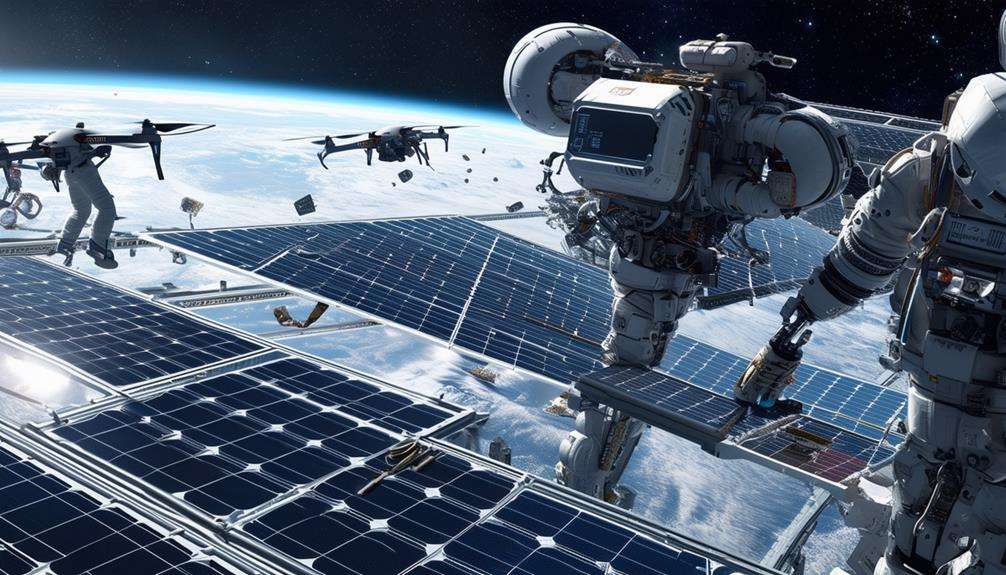
Autonomous repair drones are crucial in extending the operational lifetimes of spacecraft by performing essential maintenance tasks. These unmanned aerial vehicles (UAVs) are indispensable for missions where human intervention is either too dangerous or impractical. One of their primary functions is repairing solar panels, a critical component for energy generation. Utilizing advanced drone technology, these UAVs efficiently handle maintenance tasks, ensuring spacecraft remain functional in harsh space environments.
The potential of drones to reduce the total cost of space missions is significant. Instead of sending astronauts or additional spacecraft for repairs, these autonomous drones can be deployed to perform in-space maintenance. This approach not only cuts space transportation costs but also minimizes risks to human life. Routine checks and repairs by these drones allow spacecraft to continue their missions with minimal interruptions.
Equipped with specialized tools, repair drones enable precise and timely interventions. They can address issues such as mechanical failures or wear and tear, which are inevitable in the challenging conditions of space. By maintaining the longevity and functionality of space equipment, these drones make space exploration more sustainable and efficient.
Future Prospects of Space Drones
The future of space drones holds incredible potential for revolutionizing space exploration and infrastructure development. In upcoming missions, drones like the ARES Mars airplane could undertake tasks too risky for humans, such as exploring hazardous terrains or conducting planetary defense operations.
The benefits of using drones in space include reducing human risk, cutting costs, saving time, and collecting data more efficiently. Space agencies are investing in advancements in autonomous navigation and battery technologies to broaden drone applications.
For example, drones could construct structures for human habitation in space using 3D printing technology, which is essential for establishing long-term bases on the Moon or Mars.
Nevertheless, deploying drones in space comes with risks, including technical failures and the harsh conditions of outer space. Despite these challenges, the evolution of space drones is poised to play a significant role in developing future space habitats. By pushing the boundaries of what's possible, drones will be vital for enabling humans to live and work beyond Earth.
Conclusion
Drones are revolutionizing space exploration by enabling detailed planetary surface surveys and comprehensive aerial atmospheric studies. Their cutting-edge technology and autonomous capabilities are critical for tasks such as sample collection, in-space repairs, and navigating hazardous terrains.
As drone technology advances, these machines will become increasingly vital for constructing future space habitats and ensuring mission safety and efficiency. With drones, space exploration is reaching new heights, making missions safer and more effective.


